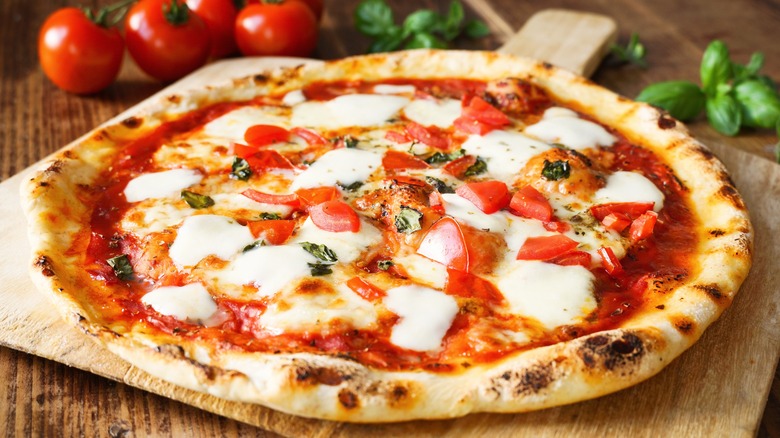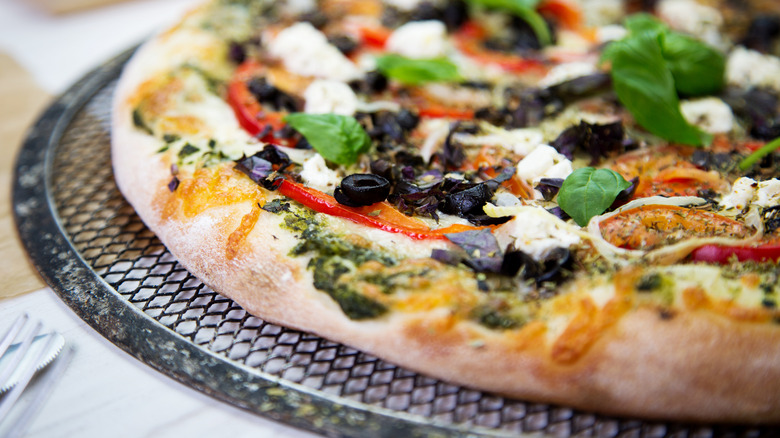What Is A Pizza Screen And How Does It Bake Your Pie?
If your pizza crust is coming out doughy, soft, and spongy no matter what you do, it's time to get familiar with the fabulous features of a pizza screen. This ingenious pizza pan creates the crispiest of pies by boosting air circulation around the base of a pizza as it bakes, courtesy of its metal-mesh design. It's a fantastic piece of kitchen equipment to have on hand if you don't have the space for a heavy pizza stone but are craving a restaurant-style pie with a lightly charred crust and thin base.
A pizza screen is similar in shape and size to a traditional low-lipped circular pizza pan used to make Neopolitan-style pies, which feature puffy, chewy crusts and delicate bases that are ultra-thin but crispy enough to retain their structure when smothered in toppings. The key difference is that the bottom of a pizza screen is made of a metal mesh, comparable to the crisscross hash design found in a sieve.
The fine apertures in a pizza screen act as entryways for the hot air to reach the dough as it meets the blazing heat of the oven, and the metal mesh conducts heat through to the middle with extreme efficiency. It's this rapid blast of heat that comes into direct contact with the pizza dough that causes it to rise at speed and bubble up into those characteristically chewy air pockets found in the very best thin-crust pizzas. It's also what makes it deliciously crispy on the bottom.
Pizza screens let you peek at the base as it cooks
The mesh design of a pizza screen also means you can easily peek underneath to check whether the dough has baked evenly, without disturbing the crust. With other varieties of pizza pans, featuring a higher rim and heavy base, you have to lift the crust with tongs to check for doneness or rely solely on the appearance of the toppings.
The lightweight nature of a pizza screen is also of great benefit when it comes to easily turning a pizza around on the rack to encourage an even color in an oven with hot spots. And then, once the pizza is ready, the mesh helps the steam to escape quickly, preventing a soggy base that's soaked up condensation as it sits. The result? A scrumptiously crisp base, coupled with an aromatic sauce and an appetizingly gooey cheese pull.
Seasoning your screen before using it for the first time — in much the same way as you'd season a wok — helps to create a non-stick patina on the surface of your pizza pan. Do this by simply applying a light coating of oil to the screen and baking it without anything on. Once cooled, repeat the process and you'll be ready to make the perfect, crispy-based pizza that effortlessly glides off your screen.

